Calcitrapa procurrens, Procumbent Centaury-thist,
Hebrew: דרדר הקורים, Arabic: قَنْطُرْيون مُـمْتَدّ
| Scientific name: | Centaurea procurrens Sprengel | |
| Synonym name: | Centaurea araneosa Boiss., Calcitrapa araneosa (Boiss.) Holub, Calcitrapa procurrens (Sieber ex Spreng.) Holub | |
| Common name: | Procumbent Centaury-thist | |
| Hebrew name: | דרדר הקורים | |
| Arabic name: | قَنْطُرْيون مُـمْتَدّ | |
| Plant Family: | Compositae / Asteraceae, מורכבים |
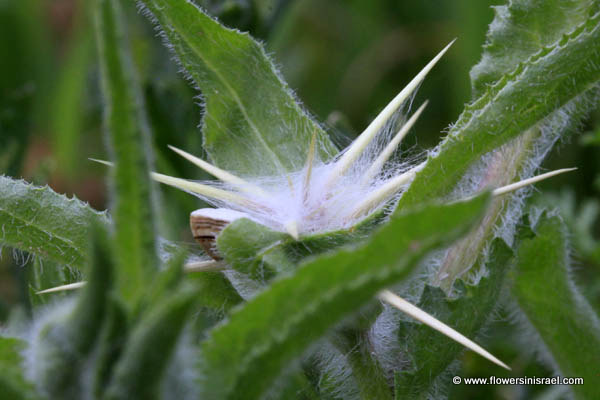
|
| Life form: | Chamaephyte | |
| Spinescence: | Bracts | |
| Stems: | 20-100 cm, ascending to erect, divaricately branched from the base | |
| Leaves: | Alternate, rosette, dissected once, dentate or serrate; cauline leaves simple with dentate margins; | |
| Flowers: | Yellow | |
| Fruits / pods: | Cypselae | |
| Flowering Period: | April, May, June, July | |
| Habitat: | Light soils | |
| Distribution: | Mediterranean Woodlands and Shrublands, Shrub-steppes | |
| Chorotype: | Mediterranean | |
| Summer shedding: | Perennating |
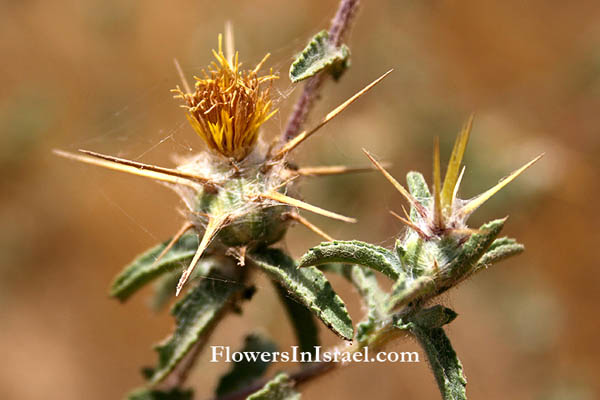
Derivation of the botanical name: Centaurea, gets its name from the centaur, Chiron, who is said in mythology to have taught us the healing power of herbs. procurrens, spreading out under ground. Calcitrapa, Latin calcitro, "to kick," caltrop, a four-pointed weapon usually positioned on the ground to impede enemy movements. araneosa, resembling a spider web. The Hebrew name: דרדר, dardar, from Aramaic: דרדרא, dardara; Arabic: דרדאר, darda'ar. (Gen. 3:18, Hos. 10:8). In modern Arabic shauket el-dardar is applied to the star thistles or knapweeds.
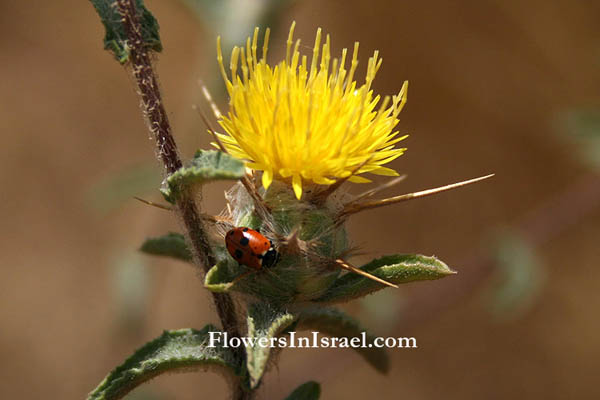
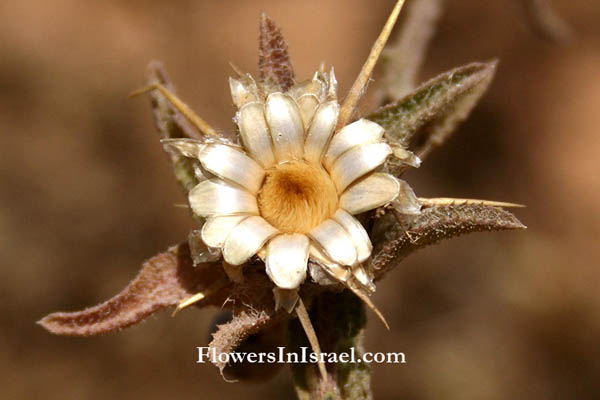

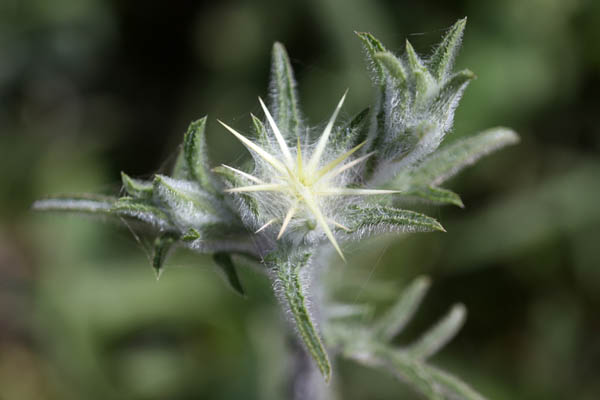
Location: Irises Dora Rainpool |